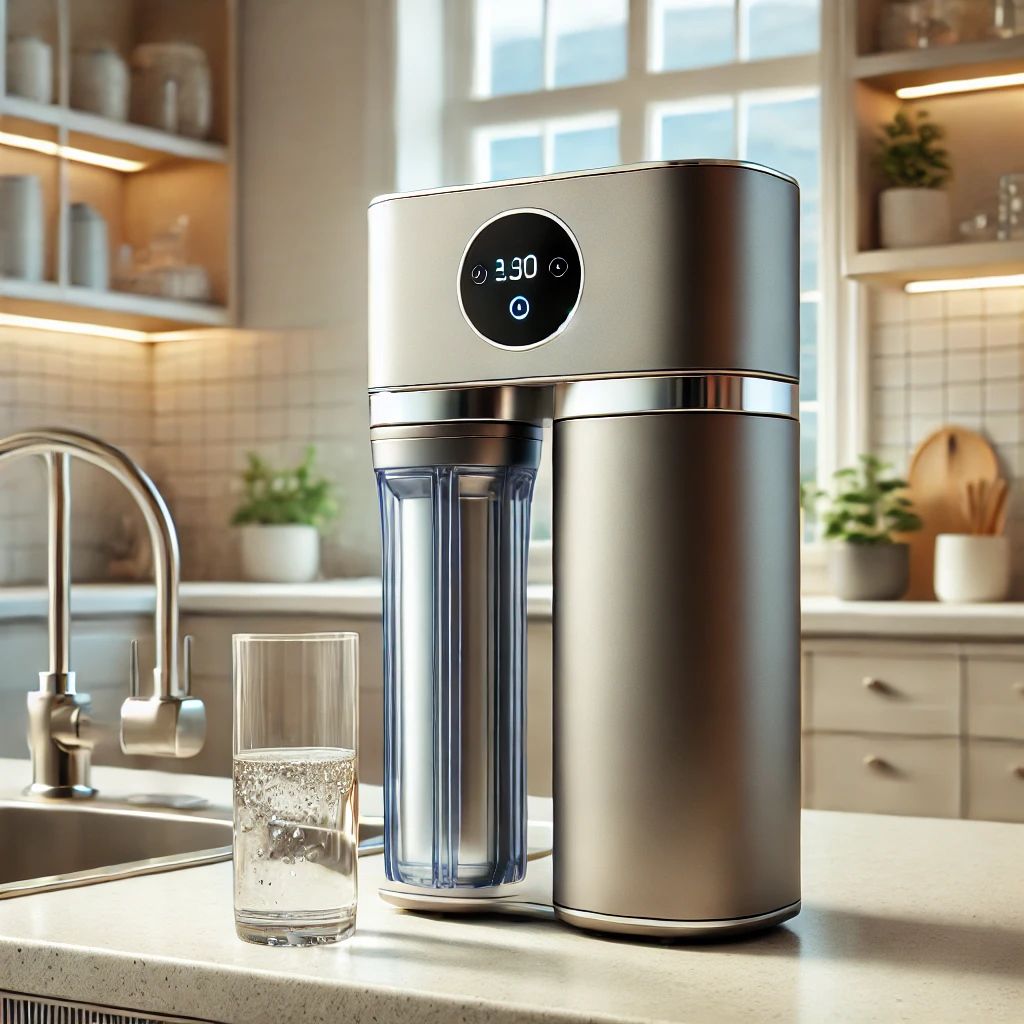In recent years, reverse osmosis (RO) has become a popular method for purifying drinking water. As concerns about contaminants and water quality grow, many households are turning to the best reverse osmosis drinking water system to ensure their water is free from impurities. However, this widespread adoption raises an important question: is reverse osmosis water safe to drink?
This blog will break down how reverse osmosis works, its advantages and disadvantages, and whether it truly provides safe drinking water.

What is Reverse Osmosis?
Reverse osmosis is a water purification process that uses a semi-permeable membrane to remove contaminants from water. In this system, water is pushed through a membrane, leaving behind harmful substances such as:
- Heavy metals (e.g., lead and mercury)
- Chemicals (e.g., chlorine, fluoride)
- Bacteria and viruses
- Dissolved solids (e.g., salts and minerals)
The result is highly purified water that is almost entirely free of contaminants. Many people turn to the best reverse osmosis drinking water system because it can remove up to 99% of impurities, making it an effective solution for households concerned about water quality.
The Advantages of Reverse Osmosis Water
There are several reasons why reverse osmosis water is considered an excellent choice for drinking water. Below are the primary benefits:
1. Removes Contaminants and Impurities
Reverse osmosis effectively eliminates many harmful substances commonly found in tap water. From chemicals like chlorine and fluoride to bacteria and heavy metals, RO systems can help protect you and your family from potentially dangerous contaminants.
This is particularly important in areas where tap water may contain high levels of pollution or where the municipal water supply is not adequately treated. Having the best reverse osmosis drinking water system in place ensures peace of mind.
2. Improves Taste and Odor
Many people report that reverse osmosis water tastes cleaner and fresher than untreated tap water. Since the system removes minerals and chemicals that can cause unpleasant flavors or odors, RO water tends to be more palatable.
3. Environmentally Friendly
Switching to reverse osmosis water can reduce the need for bottled water. This, in turn, cuts down on plastic waste, making it a more environmentally friendly option for those looking to minimize their environmental footprint.
4. Low Maintenance Costs
Although the initial investment in a reverse osmosis system might be significant, these systems tend to have low maintenance costs. Replacing filters is generally inexpensive and needs to be done only once or twice a year.
The Disadvantages of Reverse Osmosis Water
While reverse osmosis offers many benefits, it’s essential to consider the potential downsides. Here are some of the main disadvantages of using RO water:
1. Removes Essential Minerals
One of the criticisms of reverse osmosis water is that it removes not only harmful contaminants but also essential minerals like calcium and magnesium. These minerals are important for maintaining good health, and drinking water can be a significant source of them.
To counter this, many people use remineralization filters, which add essential minerals back into the water. This ensures that you still get the benefits of purified water while avoiding potential mineral deficiencies.
2. Wastage of Water
Reverse osmosis systems typically waste more water than they produce. For every gallon of purified water, several gallons may be flushed away as wastewater. However, more efficient systems are emerging that reduce this wastage.
3. Energy Consumption
Running a reverse osmosis system, particularly large ones, can consume more energy compared to other water filtration systems. This can result in higher electricity bills, depending on how much water you use.
Is Reverse Osmosis Water Safe to Drink?
The short answer is yes, reverse osmosis water is safe to drink. It effectively removes harmful contaminants that can pose health risks. However, it is important to address the loss of beneficial minerals. If you’re using an RO system for your drinking water, consider using a remineralization filter to restore these essential minerals.
Most experts agree that the benefits of reverse osmosis far outweigh the drawbacks, especially in areas where the tap water is of questionable quality. As long as you’re mindful of the potential loss of minerals and are proactive in addressing it, reverse osmosis water remains a healthy, safe option.
Choosing the Best Reverse Osmosis Drinking Water System
When shopping for the best reverse osmosis drinking water system, there are several factors to consider to ensure you get the right system for your needs:
1. Filtration Stages
Some reverse osmosis systems come with multiple filtration stages, each designed to remove specific contaminants. Look for systems with at least five stages of filtration to ensure the highest level of purification.
2. Water Wastage
As mentioned earlier, water wastage can be a concern with reverse osmosis systems. Opt for a system that offers high efficiency, meaning it wastes less water while producing purified water.
3. Remineralization Filters
If you’re concerned about the loss of essential minerals, choose a system that includes a remineralization filter. This feature adds beneficial minerals back into the water, improving its taste and ensuring you get the minerals you need for good health.
4. Certification and Warranty
Make sure the reverse osmosis system you purchase is certified by a reputable organization such as NSF International. Also, look for systems with a good warranty, as this is a sign of a manufacturer’s confidence in their product.
Conclusion
Reverse osmosis water is a safe, reliable, and effective solution for households looking to improve the quality of their drinking water. It removes harmful contaminants and provides clean, great-tasting water. While there are a few downsides, such as the removal of essential minerals and water wastage, these can be addressed with the right system and additional features like remineralization.
When selecting the best reverse osmosis drinking water system, ensure you choose one that meets your household’s specific needs. With the right system in place, you can enjoy the peace of mind that comes with knowing your water is safe, clean, and healthy to drink.
By making informed choices, you’ll benefit from one of the most effective water purification systems available today.







